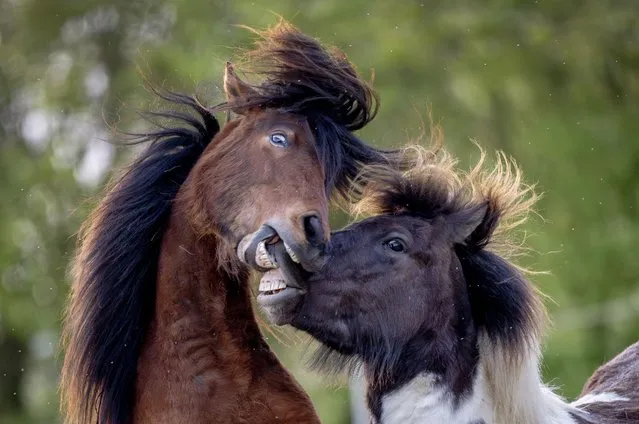
Icelandic horses play at a stud farm in Wehrheim near Frankfurt, Germany, Friday, April 12, 2024. (Photo by Michael Probst/AP Photo)
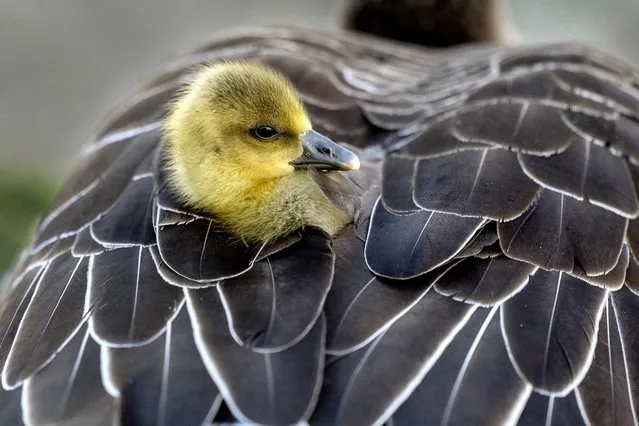
A gosling sits in the plumage of its mother, in a meadow in Frankfurt, Germany, Saturday, April 13, 2024. (Photo by Michael Probst/AP Photo)
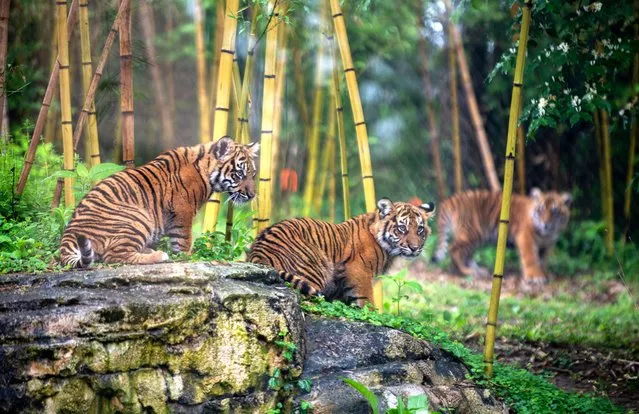
Sumatran tiger cubs explore the tiger exhibit at the Nashville Zoo in Nashville, Tenn. as a test run before the public debut on April 10, 2024. (Photo by Stephanie Amador/The Tennessean via USA TODAY Network)
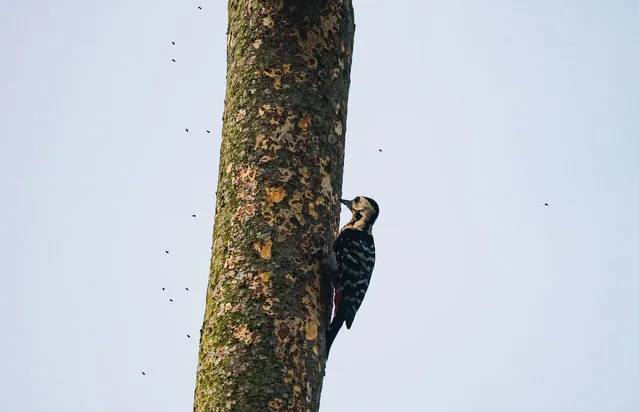
A fulvous-breasted woodpecker (Dendrocopos macei) is perching and vigorously drilling through its beak into a tall East American mahogany (Khaya anthotheca) tree, eating insects. In contrast, other insects fly away in fear at Tehatta, West Bengal, India, on April 15, 2024. The fulvous-breasted woodpecker, a medium-sized species (17 to 20 cm) in the Picidae family, is found in forests at altitudes ranging from 0 to 2800 meters in India, Bangladesh, Bhutan, Nepal, and Myanmar. These woodpeckers are non-migratory resident birds, with populations living at higher altitudes descending to lower levels during winter. (Photo by Soumyabrata Roy/NurPhoto/Rex Features/Shutterstock)
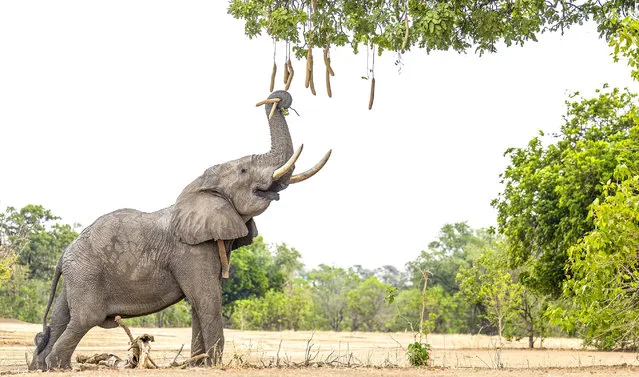
An elephant gracefully picks from a Kigelia africana at Mana Pools National Park, Zimbabwe in April 2024. Commonly known as the sausage tree, the plant’s fruit is eaten by many other animals including baboons and giraffes. (Photo by William Steel/Solent News)
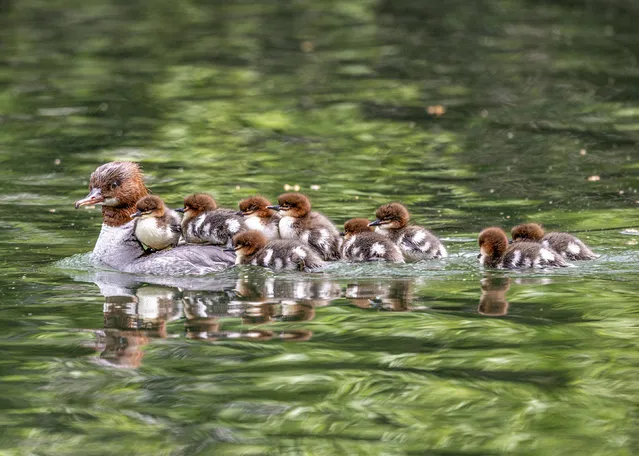
Common mergansers duck out of their swimming lessons in Mulhouse, eastern France in the last decade of April 2024. (Photo by Azim Khan Ronnie/Solent News)
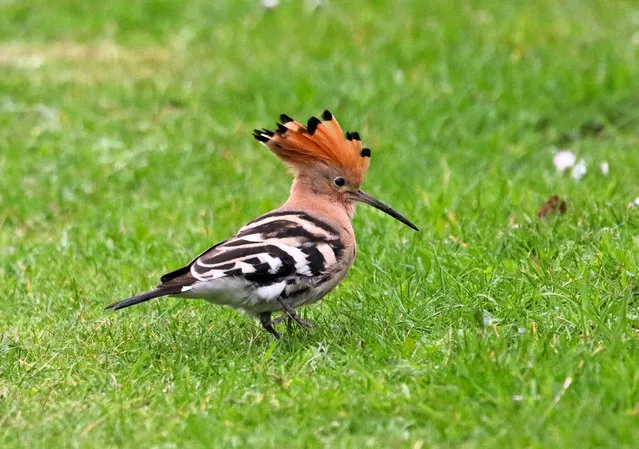
The hoopoe is an exotic bird native to Africa and parts of Europe, and certainly a rare sight in this garden in Bridgham, Norfolk, UK in the last decade of April 2024. (Photo by Linda Moederzoon/Solent News & Photo Agency)
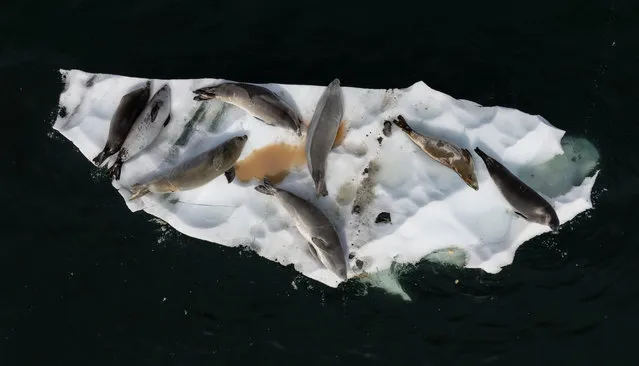
An aerial view of seals resting on an ice mass as Turkish scientists conduct a protection for the southern polar creatures, which are heavily affected by the consequences of global climate change, with the rules and observations they apply in their work in Antarctica on April 11, 2024. (Photo by Sebnem Coskun/Anadolu via Getty Images)
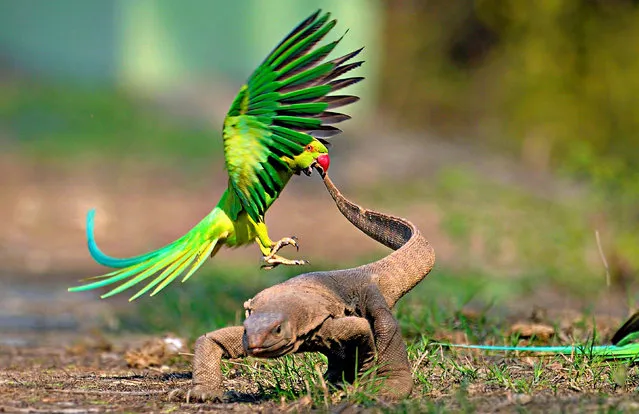
A rose-ringed parakeet attempts to chase off a monitor lizard in Keoladeo National Park in Rajasthan, India in April 2024. (Photo by Rathika Ramasamy/Solent News)
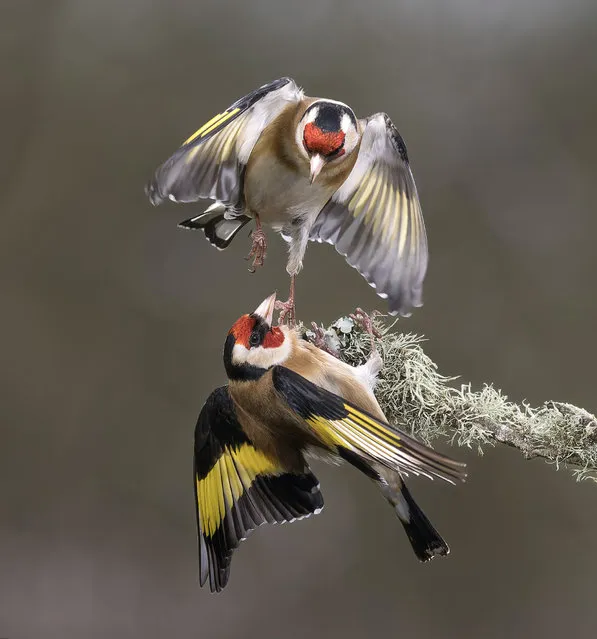
Goldfinch v Goldfinch. Mid air battles between garden birds captured by Lee O'Dwyer in his garden in Lytham, Lancs in the second decade of April 2024. (Photo by Animal News Agency)
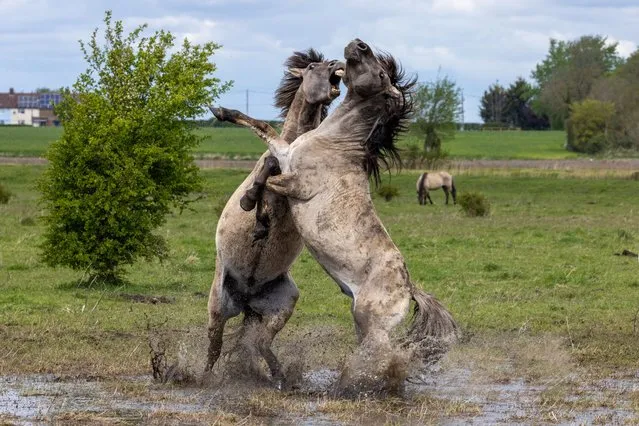
Two rival konik stallions battle for dominance in the second decade of April 2024 on the wetlands of Wicken Fen in Cambridgeshire, UK where they have been introduced to encourage biodiversity. (Photo by Bav Media)
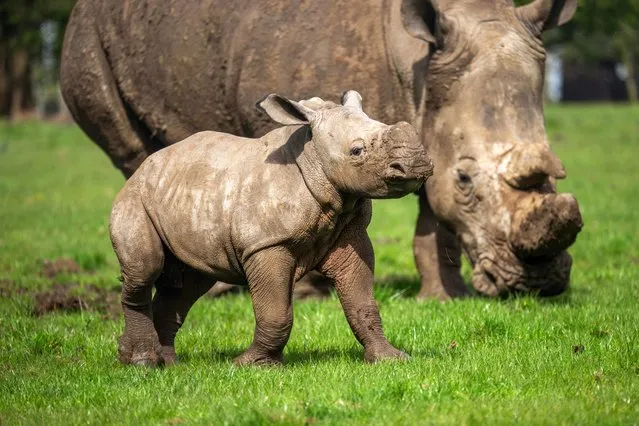
Benja, a southern white rhino, enjoys the sun with his mother, Jaseera, at Whipsnade Zoo in Bedfordshire, UK in the second decade of April 2024. Benja was born last month weighing 45kg and is Jaseera’s first calf. There are 10,000 mature southern white rhinos left in the wild, with numbers continuing to fall. (Photo by Whipsnade Zoo)
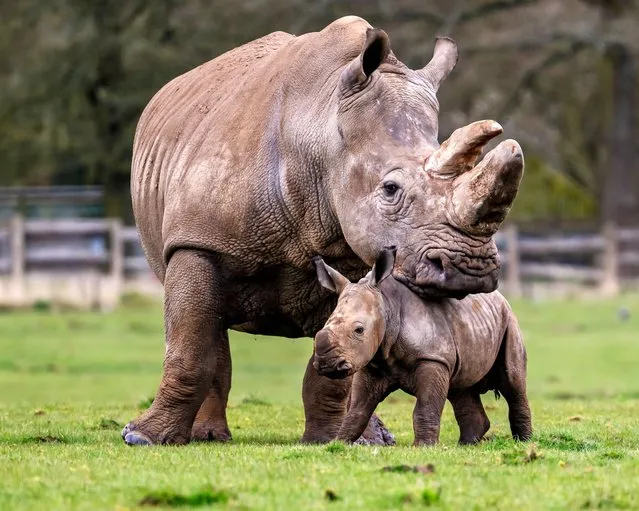
A southern white rhino calf named Benja playing in the sun while his mother Jaseera watches on in Whipsnade Zoo, England on April 24, 2024. An endangered baby rhino has well and truly found its feet after being filmed playing and exploring its new paddock – six weeks after being born. (Photo by South West News Service)
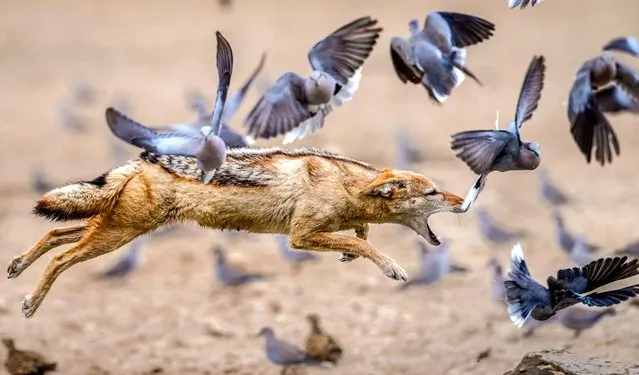
A jackal surrounded by doves leaps for a meal at the Kgalagadi game reserve in Botswana in April 2024. It is difficult for animals to survive in this part of south Africa, so this jackal is one of a few that have learned how to catch birds. (Photo by Kathy Kay/Solent News & Photo Agency)
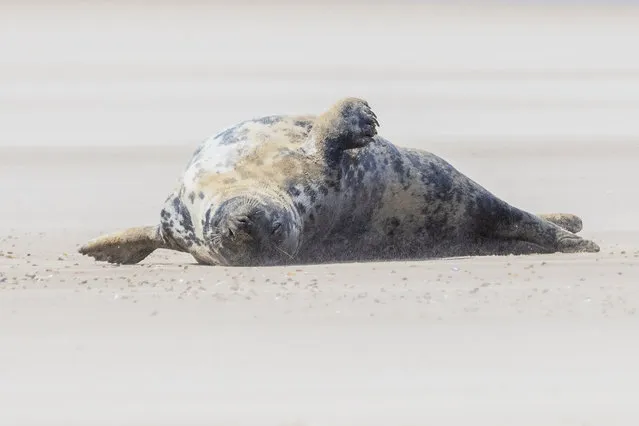
A seal basks in the sun at Blakeney Point on the Norfolk coastline, UK on April 7, 2024. The area is home to England’s largest colony of grey seals, with about 4,000 pups born each year. (Photo by Jack Hill/The Times)
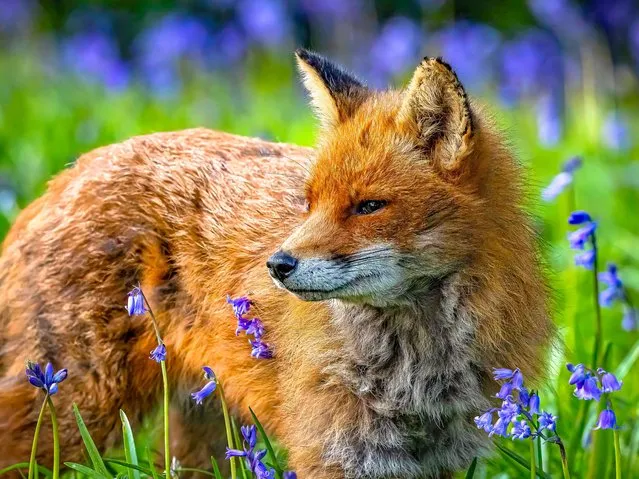
A fox among the bluebells in Bournemouth, Dorset in the second decade of April 2024. A 2017 study found that the town had the highest concentration of urban foxes in the UK, with 23 per sq km. (Photo by ShazzHooper/BNPS)
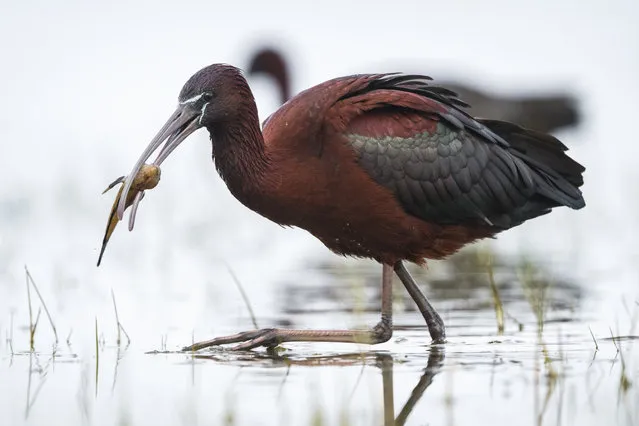
A Glossy ibis (Plegadis falcinellus) is seen feeding on the shore of Lake Uluabat during spring season in Bursa, Turkiye on April 09, 2024. These birds, which prefer wetlands for feeding and nesting, are characterized by their long, curved beak and dark-colored feathers. (Photo by Alper Tuydes/Anadolu via Getty Images)
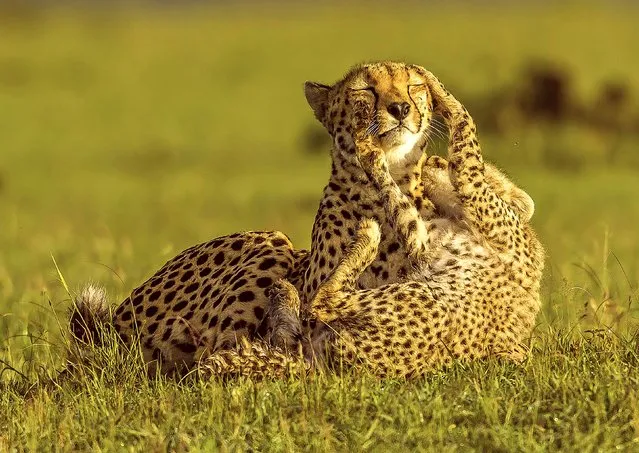
A cheetah cub playfully pounces on its mother, then gives her a hug in a heartwarming show of affection at Maasai Mara National Reserve, Kenya in April 2024. Female cheetahs tend to live a solitary life when they reach adulthood, only regaining a social life when raising their own cubs. (Photo by Manoj Shah/Solent News & Photo Agency)
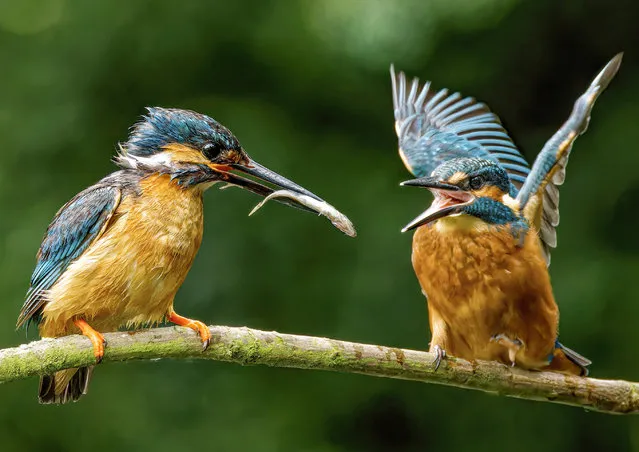
Two kingfishers argue over a stickleback supper in West Somerton, Norfolk, East of England in April 2024. (Photo by John Crooks/Solent News)
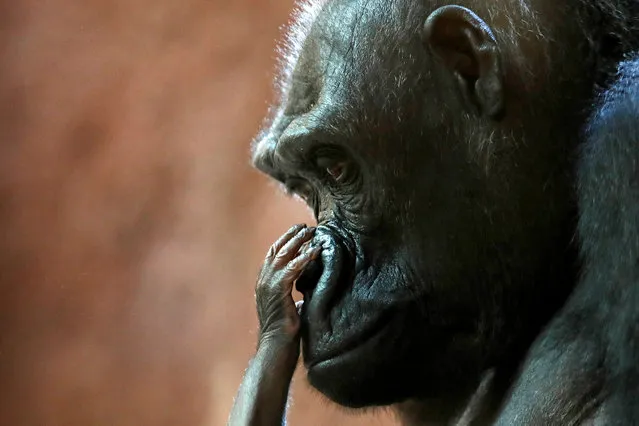
Kijivu, a western lowland gorilla, holds her one-day-old baby inside its enclosure at Prague Zoo, Czech Republic, on April 12. 2024. (Photo by David W. Cerny/Reuters)
28 Apr 2024 03:34:00,
post received
0 comments
